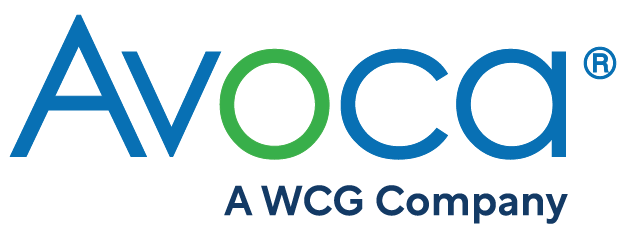Article: Tips on Sponsor and CRO FDA Inspections
December 15, 2022 – Applied Clinical Trials
By Moe Alsumidaie, Editorial Advisory Board member and contributor, Applied Clinical Trials

Vice President,
WCG Avoca Quality Consortium
With the update of the Bioresearch Monitoring Program (BIMO) Sponsors and Contract Research Organizations Compliance Program Manual, FDA provides a comprehensive overview of inspection activities with significant revisions to Part III–Inspectional section. Michelle Webb, vice president of the WCG Avoca Quality Consortium, discussed her perspectives at Momentum Events’ Clinical Quality Oversight Forum.
Moe Alsumidaie: How do different parts of FDA operate when identifying and conducting clinical trial inspections?
Michelle Webb: BIMO is a thorough FDA-wide program for on-site inspections and data audits created to monitor every step of the execution of clinical trials.The Center for Drug Evaluation and Research (CDER) and the Office of Regulatory Affairs (ORA) are two critical organizations within FDA who shoulder the responsibilities for Sponsor and CRO Inspections. These two divisions share important information related to inspections through an electronic program called eNSPect. CDER issues inspection assignments and makes decisions regarding the type of inspection and who to inspect, whereas the ORA conducts the inspections, and recommends the initial classification.
MA: What does FDA look at during sponsor and CRO inspections?
MW: The BIMO compliance program manuals were created to provide standardized instructions for the conduct of inspections. In the spirit of transparency, this information is publicly available for those who will be inspected so they can be better prepared.If you want to understand exactly what inspectors will be assessing during a particular type of inspection, you can simply reference the relevant manual.Essentially, FDA is giving us the test before taking it. What we see with this update to the Sponsor and CRO Compliance Program Manual is in alignment with the changes we have seen in the clinical trial ecosystem over the last 4 years since the previous version.Inspectors will have an increased focus on the selection and monitoring of clinical investigators; sponsor’s oversight of CROs and other vendors, especially those linked with patient safety or data integrity services; the selection of monitors and monitoring procedures; and a deeper examination of data collection and handling as well as electronic records and signatures.
MA: How are clinical trial inspection findings categorized?
MW: Clinical trial inspection findings are detailed in follow-up reports:
No one wants to get an official action, which occurs when there is repeated or serious noncompliance. However should deviations result in the issue of an FDA 483, the updated guidance reminds the inspector to advise the sponsor that an adequate and timely response to an FDA 483 could affect FDA’s decision for further action.
MA: What are a few things sponsors should prepare for inspectors?
MW: A notable difference between this version and the previous one is regarding the review and collection of written agreements. Previously the inspector was required to ‘review’ written agreements and the focus was very much on SOPs. The updated language is quite specific, noting that inspectors are to review written monitoring plans/guidelines/procedures/reports and obtain copies of all versions of written agreements. It will be important for Sponsors and CROs to ensure they have complete documentation readily available in time for the inspection.
Among many things, before an inspection, sponsors should prepare a list of clinical investigators which includes site number, location, who completed Form FDA 1572, if investigators were terminated or placed on enrollment hold and reason, and all healthcare providers who provide patient health data or deliver health care to support the marketing application. Additionally, inspectors will be following the flow of critical data. Something we have heard within our member experience focus groups is the value of a data flow diagram, while not required, it will be collected if available. I can tell you from experience that while it’s best to have the data flow prepared prior to study start, even creating this retrospectively before the inspection may reveal vulnerabilities. It is never too late to address them.
MA: Can sponsors use investigators included on the debarment list in clinical trials?
MW: A new step in this update is reviewing sponsor procedures for checking FDA debarment list. You are still allowed to use an investigator if they are on the debarment list, but you must ensure that you have sufficient documentation assessing the level of risk and clearly outline your level of oversight.
MA: How is FDA assessing sponsor oversight?
MW: A brand-new section of this compliance manual is dedicated to outsourcing services. The addition of this section provides insight around FDA’s expectations for having strong, proactive vendor management and oversight.With so many different vendors, oversight entails a lot of responsibility. Sponsors and CROs should have written agreements defining roles, obligations, and tasks within a document or SOP—here is where a quality agreement or joint quality management plan could be important. Monitoring, drug management, training, and data handling are activities where inspectors will request documentation for review, to ensure effective oversight is in place
MA: What are common findings during FDA inspections?
MW: Failure to select qualified investigators and/or monitors as well as failure to maintain adequate records were common inspection findings found in BIMO 2021 metrics. What is interesting is that many of the focus areas highlighted in this updated guidance document very closely align with these.Increased scrutiny on the selection and monitoring of clinical investigators and monitors, and monitoring procedures as well as data collection and handling activities are evidenced by the enhancements made in this update.
MA: What advice would you give to sponsors?
MW: In alignment with ICH E6 R2, the Sponsor and CRO Compliance Manual highlights the importance of establishing a solid Quality Management System which allows for risk assessment and issue detection.Also having robust vendor oversight, quality metrics and processes for knowledge management are vital. Focusing on building quality into the clinical trial process through proactive compliance, including having a clearly stated protocol, risk identification, and robust, clearly documented processes and procedures will ultimately help you succeed in your inspections.
Moe Alsumidaie, MBA, MSF, is a thought leader and expert in the application of business analytics toward clinical trials, and Editorial Advisory Board member for and regular contributor to Applied Clinical Trials.

